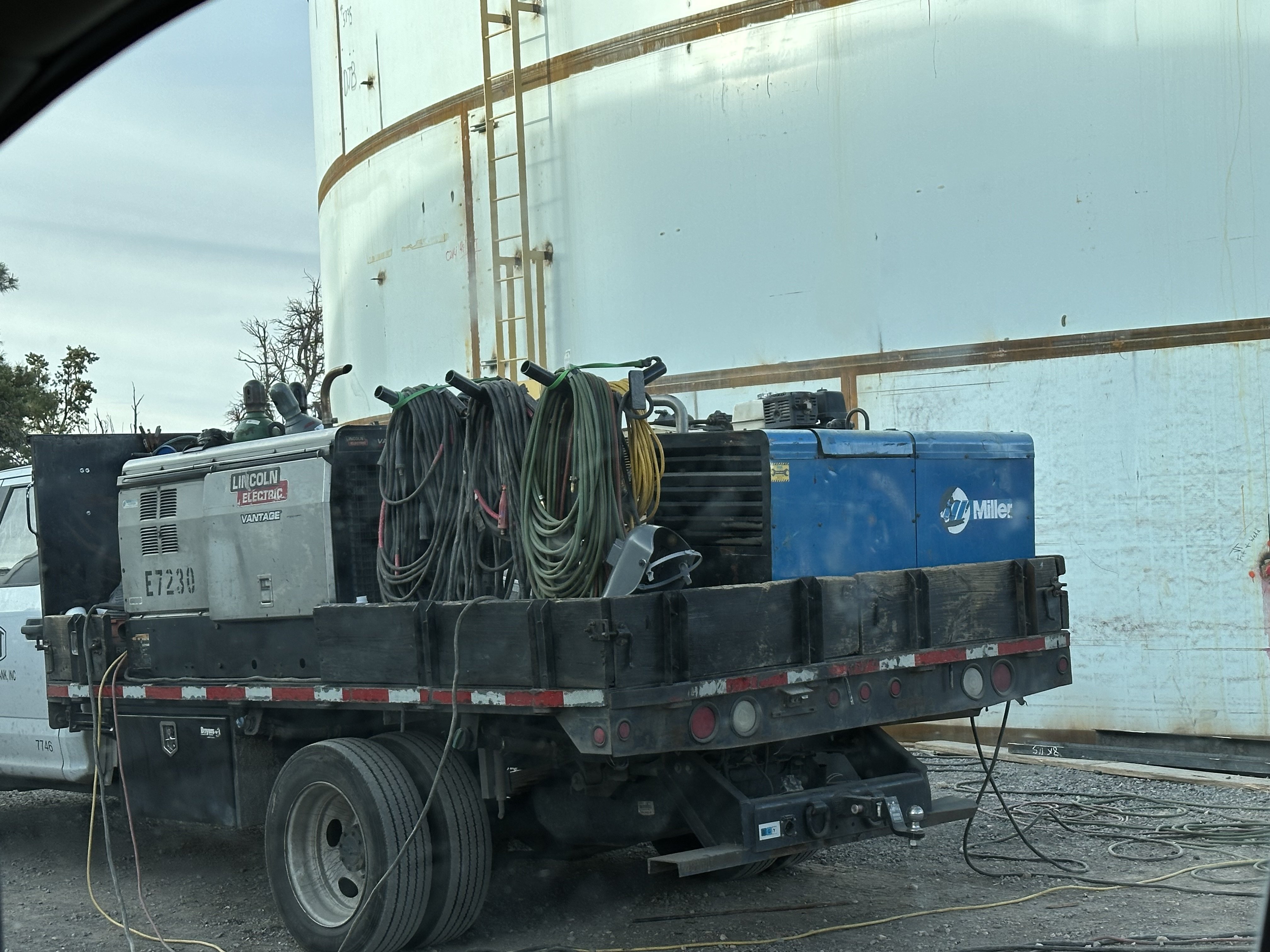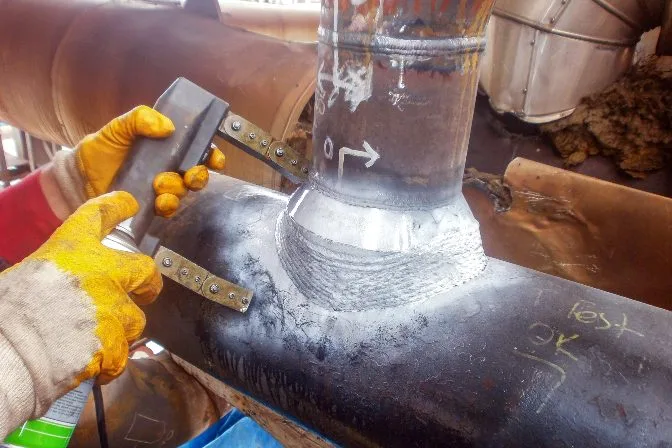Tank Welding Inspection: Ensuring Long-Term Resilience and Safety
Tank Welding Inspection: Ensuring Long-Term Resilience and Safety
Blog Article
Comprehensive Overview to Effective Container Welding Examination Techniques and Finest Practices for Top Quality Guarantee
In the realm of container welding, rigorous evaluation methods are vital for securing architectural stability and making sure conformity with market guidelines. This overview provides a structured method to various examination methods, consisting of aesthetic analyses and non-destructive testing, which play a vital role in discovering problems before they escalate into significant concerns. Furthermore, the value of precise documentation and the implementation of continuous renovation methods can not be overstated. As we explore these essential elements, it becomes clear that a positive inspection strategy is not simply valuable, however vital for operational success in settings taking care of dangerous products.
Value of Tank Welding Assessment

Tank welding evaluation acts as a preventative action, determining possible issues such as splits, porosity, or incorrect joint infiltration prior to they escalate into severe concerns. Regular examinations not only follow market policies and requirements but also enhance the long life of the containers, minimizing the requirement for costly repairs or substitutes.

Visual Assessment Strategies
Utilizing systematic visual inspection techniques is essential for evaluating the quality and integrity of welded joints in containers. This approach acts as the very first line of defense in determining prospective problems such as cracks, damages, and insufficient penetration. The assessor should approach the task with an eager eye, making use of ideal devices like amplifying glasses, flashlights, and mirrors to improve visibility.
During the assessment process, the inspector should evaluate the weld account, guaranteeing it adheres to defined standards and guidelines (Tank Welding Inspection). This consists of checking out the grain width, height, and blend with the base product. Examiners should additionally pay attention to the bordering areas for indicators of thermal distortion or contamination that might influence the weld's performance
Documentation of searchings for is essential; assessors need to tape any anomalies, classifying them by intensity for further analysis. This methodical method not only help in instant defect recognition however additionally adds to long-term top quality assurance by making sure conformity with sector criteria. Regular training and calibration of aesthetic evaluation strategies even more improve the integrity of assessments, inevitably leading to more secure and much more durable container structures.
Non-Destructive Examining Techniques
Non-destructive screening (NDT) methods are often employed in storage tank welding inspections to analyze the integrity of bonded joints without compromising their architectural integrity. These methods are vital for recognizing problems such as splits, voids, and additions that can cause tragic failings if left undiscovered.
Common NDT methods include ultrasonic screening (UT), which makes use of high-frequency sound waves to find inner flaws; radiographic screening (RT), using X-rays or gamma rays to imagine weld structures; and magnetic fragment testing (MT), which reveals surface and near-surface suspensions in ferromagnetic products (Tank Welding Inspection). Liquid penetrant testing (PT) is additionally commonly utilized, with the ability of detecting surface-breaking flaws by using a fluorescent or shade contrast dye
Each NDT technique has its details applications and advantages, making it crucial for assessors to select the ideal method based upon the product and the sort of weld being examined. The combination of these NDT methods into the evaluation procedure enhances the general high quality guarantee framework, making certain that bonded tanks satisfy security and performance criteria. Inevitably, NDT plays an important function in keeping the integrity and long life of storage tank frameworks in numerous commercial applications.

Documentation and Coverage
Making certain extensive documentation and reporting throughout container welding evaluations is important for preserving compliance with industry requirements and helping with effective interaction among stakeholders. Correct documents acts as an extensive document of inspection tasks, searchings for, and any kind of rehabilitative actions taken throughout the welding process. This info is crucial not just for quality control but additionally for audits and regulatory testimonials.

A well-structured inspection record need to include information such as the date of why not look here assessment, names of assessors, welding procedures employed, materials used, and any type of variances from developed criteria. Furthermore, photographs and layouts can enhance the clearness of the record, providing aesthetic context to the findings. It is likewise important to record any kind of non-conformities together with their resolution, ensuring that all stakeholders are notified of possible risks and the actions taken to mitigate them.
Moreover, preserving a centralized database for all examination reports allows for simple access and testimonial, fostering a culture of transparency and accountability. By prioritizing thorough documentation and reporting, organizations can not only maintain quality control Continue yet also strengthen their reputation within the market, inevitably bring about boosted safety and security and operational efficiency.
Continuous Improvement Practices
Constant improvement techniques are crucial for boosting the quality and effectiveness of tank welding evaluations. One efficient method includes routine training and upskilling of examination employees to stay abreast of the most current welding technologies and requirements.
In addition, making use of data-driven analysis allows organizations to track evaluation outcomes, determine trends, and pinpoint areas for renovation. Using tools such as origin analysis can help in news comprehending the underlying issues leading to problems, allowing targeted treatments. Furthermore, getting comments from inspection teams and stakeholders develops a joint atmosphere that encourages innovative solutions.
Incorporating innovative innovations, such as computerized evaluation systems and real-time surveillance, can substantially boost the accuracy and rate of assessments. Regular audits of the examination procedures additionally add to a culture of accountability and constant improvement. Ultimately, these constant renovation practices not just boost the top quality of container welding examinations but likewise add to overall functional excellence and customer complete satisfaction.
Conclusion
In verdict, effective storage tank welding inspection is pivotal for making certain the structural honesty and security of storage space systems, especially those dealing with dangerous products. Utilizing a mix of aesthetic examination techniques and non-destructive screening methods assists in the very early recognition of defects, therefore maintaining compliance with industry criteria.
Report this page